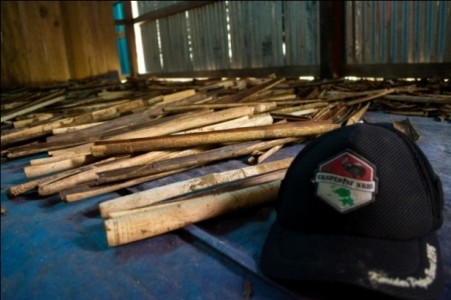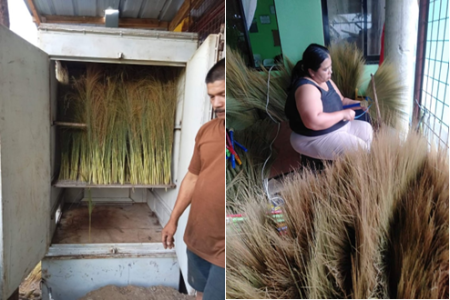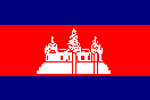The utilization of Masoi Bark (Cryptocarya massoy (Oken) Kosterm.) in Sobey Village, Teluk Duairi District, Wondama Bay, West Papua Indonesia | 06/02/2017

Masoi (Cryptocarya massoy (Oken) Kosterm) is one of useful tree grows naturally almost in every part of Indonesian islands and China. In the eastern part of Indonesia, the tree species grows in Maluku (South Seram, Bacan, Aru island), Papua and Papua New Guinea. The tree belongs to Lauraceae family and the species is formerly known as Cinnamomum massoy. In Java, masoi tree grows at about 1,000-1,500 m above sea level. Masoi bark is commonly extracted for masiolaktone (C10H16O2) compound, which could be used for medicine and cosmetic as well as perfume.
Masoi tree is abundantly available in Teluk Duari Distric, Wondama Bay, West Papua. It grows naturally in mountainous area, and the tree stem diameter reaches about 10-15 cm and 3-5 m in height. Currently, the masoi bark is economically useful as an additional income for local community who relies mainly on animal hunting and sago processing.
Masoi bark is harvested traditionally by cutting the trees or direct peeling of the bark from the living trees. Masoi trees are chopped down manually by cleaver, and left over about 0.5 – 1 m stump height, for quick recovery of the stem. Masoi shoots will grow rapidly in the left over stem. In the other method, the bark is peeled out from the masoi living tree starting from the ground to the height as high as the peeler could reach. A kilo of masoi bark is traded from local people for IDR 45,000.
Harvesting and utilizing process of masoi bark are stated as follows: 1) tree cutting, 2) bark peeling with the length of 0,5 – 1 m, 3) collecting from forest to buyer collecting point, 4) transporting to the factory, 5) drying, 6) grinding, and 7) distilling. Masoi bark processing was observed in Sobey Village, which has been operated since two years ago. The industry processes the masoi bark after reaches the minimum volume, in order to save fuel. Masoi bark oil extraction takes about 20 hours. The processes in industry are as follow: 1) Masoi bark drying, 2) weighing and grinding, 3) distilling, 4) steam boiler (temperature > 100°C), 5) steam condensing, 6) filtering and purifying. However, residue from the distillation process is wasted and dumped around the factory. The waste may also be utilized as plant grows media or combustion energy in the distillation process. Further study on the masoi bark processing utilization is needed to maintain oil quality.
Author : Zakaria Basari-NKRI Expedition –West Papua Corridor (2016)
Translator : Ratih Damayanti, PhD.
Editor : Krisdianto, PhD.
















